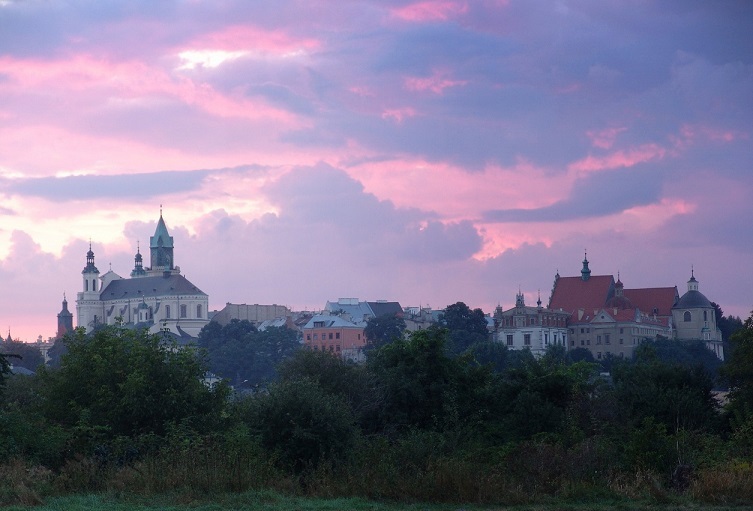.JPG)
Trinitarian Tower. The impressive tower used to be an inconspicuous wicket leading to the buildings of the Jesuite college, adjacent to the city walls. Only after the renovation in 1819, according to the project of Antonio Corazzi, the 60 meter-high tower became the dominant point of the city landscape. The Archdiocesan Museum of Sacred Art is located inside the tower, with its collection of sacred sculptures from the Lublin region and many other interesting exhibits. The last floor is an observation deck from which you can admire the panorama of Lublin. To get there the visitors need to overcome 207 steps. It's definitely worth it.
The castle tower. The romanesque tower is the oldest building at the Castle Hill. It was erected in the 2nd half of the XIII century out of stones and bricks. The tower is about 20 meters high and at it thickest point it reaches even 4 meters. The highest level is illuminated through a biforium - a window divided with a stone column, characteristic for romanesque architecture. On the top of the tower there's a view point with a wonderful view over the Old Town and the nearest area.
The terrace at the Centre for the Meeting of Cultures. Impressive, modern silhouette of the Centre for the Meeting or Cultures was designed by a renowned Lublin architect, Bolesław Stelmach. The industial arrangement is crowned with green terraces, overgrown with plants typical for the Lublin Region. City Artistic Apiary is located there as well. While strolling through a glass corridor under the open sky, you can have a look at the city below. Wow! (Don't forget about a selfie).
Czwartek Hill. It's one of the oldest suburbs of Lublin. The name comes from the fairs that used to take place every Thursday. Local church of St Nicholas was erected in the first half of the XVI century on a hill above the Czechówka River. In the first half of the XVII century the church was redesigned in the Lublin renessaince style. The vast panorama seen from this place is truly impressive - especially in the mornings, when Lublin wakes up.
The green roof of the Vivo. After tiring shopping session it's time to catch a breath. To do that it's worth to visit the roof of the Vivo shopping centre, where a green area in the middle of the city can be found, with its alleys, multitude of plants, benches, and a great view over the castle and part of the Old Town, including the Dominican Friars church and monastery. No need for further incentives.
Po Farze Square. If you look for a good spot with a view over the Lublin Castle, this is the place. The name of the square comes from the fact that for a few hundreds years the St Nicholas the Archangel used to stand here. It was the first parish church in the city, hence known as Fara. It was most probably built in the XIII century. According to the legend it was founded by the duke Leszek the Black as a votive for victory over the Yotvingians.
The cycling path by the Bystrzyca river. "Lublin crouched on its pasture. All by itself - with the silence." – that's how Józef Czechowicz wrote about the city in "A Poem about Lublin". We are almost sure that the poet was inspired to write these words by a walk along the Bystrzyca river, near the current Tatary district, in the eastern part of the city. To you we also recommend a walk or a bicycle trip. Lublin is perfectly visible from here.
The backyard at the Jezuicka street. The most famous view of Lublin comes from "Civitates orbis terrarum", a work by Braun and Hogenberg, printed in Cologne in 1618. The view presents the city during the "golden age", so at the turn of XVI and XVII century. In one of the backyards at Jezuicka 1 street an impressive mural presenting the aforementioned view was created.




